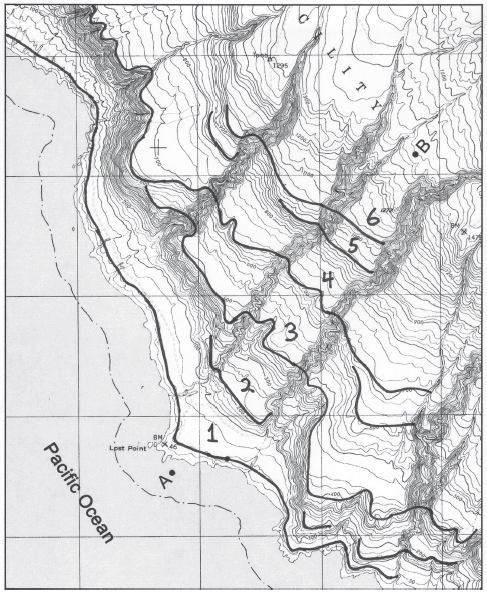What country was the first to found an oceanographic institution to meet some of the demands
associated with scientific oceanography?
a. United States
b. England
c. Japan
d. Monaco
ANS: D
The first oceanographic institution, a lab and a museum, was founded by Prince Albert I of Monaco in
1906. The famous Jacques Cousteau was a student at this facility. Later, in 1921, Monaco was the site
of the International Hydrographic Bureau, an oceanographic agency. Information can be found in the
section Contemporary Oceanography Makes Use of Modern Technology.
You might also like to view...
How many marine terraces are shown on the profile?
The following questions are based on Figure 49-8, a portion of the “San Clemente Island Central, California” quadrangle shown on the following page (scale 1:24,000; contour interval 25 feet; index contours drawn every fourth line; to view this map in color, go to the Lab Manual website or scan the QR code for this exercise), and the stereogram of San Clemente Island (Figure 49-7). The map and stereogram show a series of marine terraces on San Clemente Island in southern California (32°51"08"N, 118°29'58"W). The terraces have been incised by streams in several places.

Figure 49-8: USGS “San Clemente Island Central, California” quadrangle (scale 1:24,000; contour interval 25 feet; note that the index contours on this map have been drawn every fourth line;cN)
Thunder is caused by ____
A) the collision between two thunderstorms with opposite electrical charge B) the rapid heating of air surrounding a lightning channel C) the explosion that occurs when + and - charge collide and neutralize each other D) turbulent wind motions inside the thunderstorm
The signs of the zodiac used in astrology refer to the constellations that lie along the plane of the ecliptic
Indicate whether the statement is true or false
Which of the following statements is true?
A. If a substance is toxic, its toxicity is highly dependent on its form and where it is present in the environment. B. If a substance is toxic, it is equally toxic regardless of its form or where it is present in the environment. C. The most important factor in the toxicity of a substance is its persistence in the environment. D. The most important factor in the toxicity of a substance is the route it enters our bodies. E. None of these statements is true.